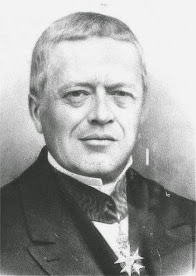On February 27, 2017 Government of India notified the Specified Bank Notes (Cessation of Liabilities) Act 2017.The Act repealed the Specified Banknotes (Cessation of liabilities) Ordinance 2016 providing for cessation of liabilities for the Specified Banknotes (SBNs) and for matters connected therewith and incidental thereto, with effect from December 31, 2016. The SBNs cease to be the liabilities of the Reserve Bank under Section 34 of the RBI Act and cease to have the guarantee of the Central Government.
A grace period has been provided during which the Specified Bank Notes can be deposited at five RBI Offices (Mumbai, New Delhi, Chennai, Kolkata, and Nagpur by Indian citizens who make a declaration that they were outside India between November 9 and December 30, 2016, subject to conditions or any class of persons for reasons that may be specified by notification by the Central Government. The Reserve Bank, if satisfied after making the necessary verifications, that the reasons for failure to deposit the notes till December 30, 2016 are genuine, will credit the value of notes in the KYC (Know Your Customer) compliant bank account of the tenderer.
The grace period for resident Indians expired on March 31, 2017. For non- resident Indians (Indian passport holders), the grace period is till June 30, 2017.
Any person aggrieved by the refusal of the Reserve Bank to credit the value of notes as mentioned above may make a representation to the Central Board of the Reserve Bank within 14 days of the communication of such refusal to him/her.
In terms of Section 6 of the Act, whoever knowingly or wilfully makes any false declaration shall be punishable with a fine which may extend to 50,000 INR or five times the amount of the face value of the SBNs tendered whichever is higher.
In terms of Section 5 of the Act, with effect from December 31, 2016 no person shall knowingly or voluntarily hold, transfer or receive any specified banknotes. After the expiry of grace period, holding of not more than 10 notes in total, irrespective of denomination or not more than 25 notes for the purpose of study/ research/ numismatics is permitted. Also, nothing contained in this section shall prohibit the holding of specified banknotes by any person on the direction of a court in relation to any case pending in the court. For deposit of confiscated SBNs, GoI has notified Specified Ban Notes (Deposit of Confiscated Notes) Rules 2017 on May 12, 2017.
In terms of Section 7, contravention of Section 5 shall be punishable with fine which may extend upto 10,000 INR or five times the face value of the SBNs involved in the contravention, whichever is higher.
In case the contravention/default in terms of Sections 6 and 7 is by a company, every person who was in charge of and responsible to the company at the time of contravention/ default shall deemed to be guilty and will be liable to be proceeded against and punished. If the offence is proved to be attributable to the conduct by any director/manager/secretary/officer/employee of the company, such person shall also be deemed to be guilty of the offence and will be liable to be proceeded against and punished accordingly
Source -RBI.



